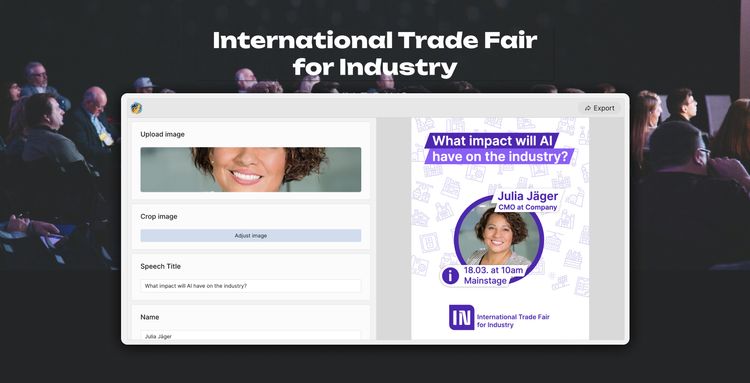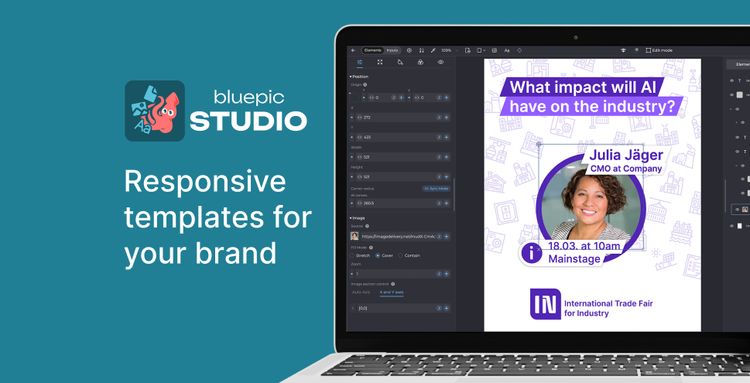Why the Graphic Design Industry Isn't Saturated Yet

In the shadow of the graphic design titans lies a nuanced landscape dotted with niche markets, each serving a distinct purpose and clientele.
With a valuation that eclipses many industries at 20 billion USD, it’s easy to overlook the diverse undercurrents that comprise the sector. In this blog post, we'll dissect the nuanced layers of this market and reveal why there's still ample space for products that cater to specialized needs—using BLUEPIC's targeted approach as a case study in finding and filling these gaps.
Chapter One: Understanding the Landscape
In the graphic design industry, Adobe Creative Cloud and Microsoft PowerPoint dominate, accounting for a major portion of the market's revenue. Their long-standing dominance might give the impression that the market is saturated and leaves little room for new entrants. However, the recent successes of Canva and Figma challenge this notion, showing that the market is more dynamic than it appears.
Canva's rise highlights a demand for user-friendly design tools. It caters to non-professionals and those who need quick, simple solutions, a segment that Adobe and Microsoft's more complex suites don't fully address. Figma's success story is about filling a gap in collaborative interface design. It offers a platform for real-time teamwork that wasn't previously available, appealing to a segment looking for collaborative, web-based design solutions.
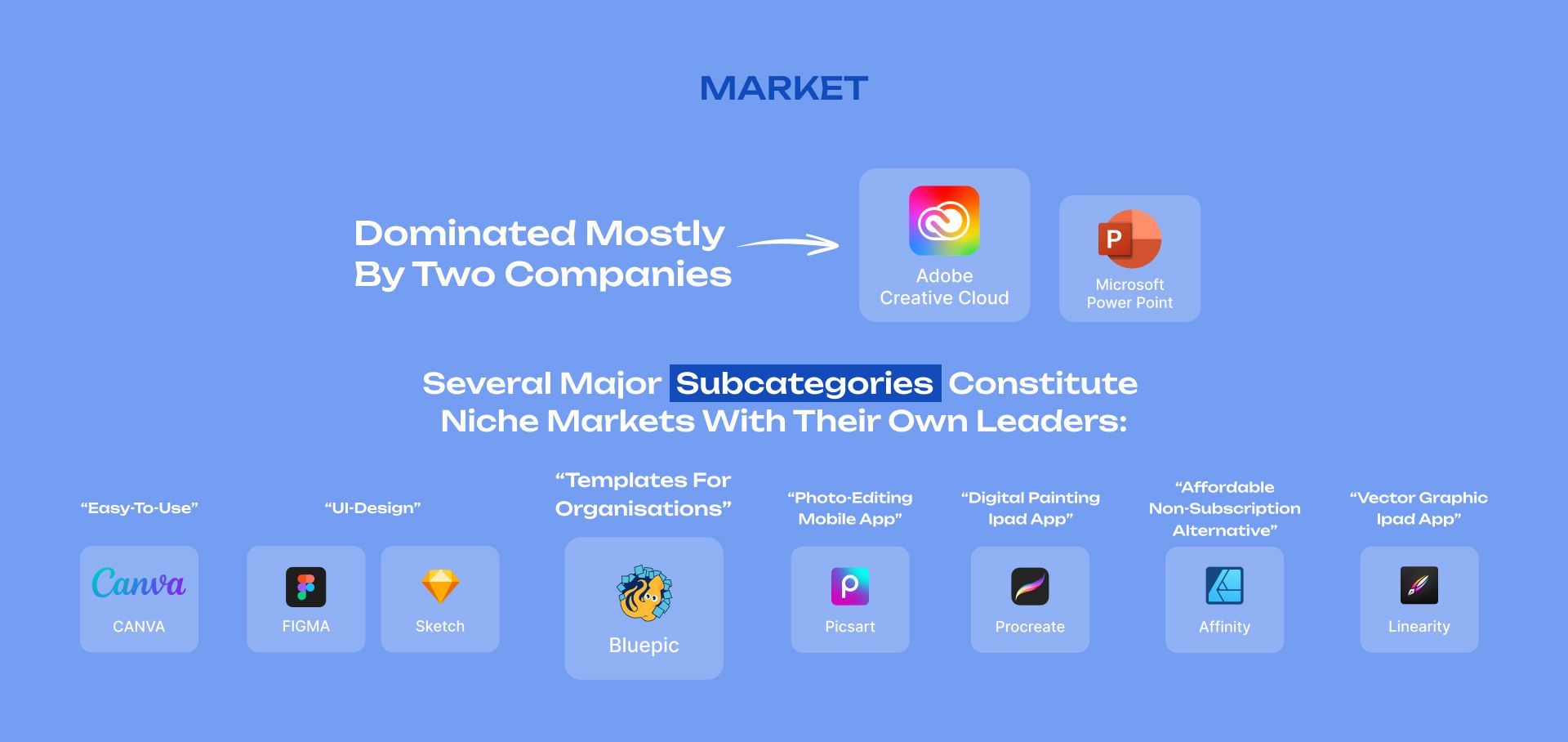
Crucial to understanding the industry landscape is this: Newcomers aren't directly competing with Adobe or Microsoft. Instead, they've identified and targeted specific market segments, effectively creating their own playing fields. The successes of Canva and Figma highlight an important aspect of the current graphic design market: the emergence of new niche-market leaders. Canva and Figma have not only entered these niches but have also become leaders within them, as evidenced by their significant revenues. However, not all niches have clear leaders yet, and in some areas, there's still a competitive battle underway.
The Rich Tapestry of Niche Markets
A deeper look at the industry reveals a rich tapestry of niche markets, each representing unique user needs and opportunities:
- Easy-to-Use Design Software (Led by Canva): This niche is marked by user-friendly interfaces for non-designers, emphasizing simplicity and accessibility over complex functionalities.
- UI Design (Led by Figma, Sketch): A segment focused on specialized tools for user interface design, catering to professionals in web and app development.
- Photo-Editing Mobile Apps (Led by Picsart): This market segment is tailored for mobile users, offering easy-to-use photo editing tools on-the-go.
- Digital Painting iPad Apps (Led by Procreate): A niche focusing on artistic software specifically designed for tablet users, emphasizing creative freedom and touch-screen capabilities.
- Affordable Non-Subscription Alternatives (Led by Affinity): This segment appeals to users seeking cost-effective, one-time purchase software as an alternative to subscription-based models.
- Vector Graphic iPad Apps (Led by Linearity): Dedicated to vector graphic design on tablets, this niche combines the precision of vector graphics with the portability of mobile devices.
- Templates for Organizations (Led by Bluepic): A niche catering to businesses needing customizable templates that maintain brand consistency across various platforms.
Each of these niches represents a distinct set of user preferences and requirements, offering fertile ground for new market entrants.
The strategic advantage for new entrants in these niche markets lies in their ability to offer more specialized, user-focused solutions. They can quickly adapt to the evolving needs of their specific user base, iterating rapidly based on feedback and emerging trends. This targeted approach allows them to carve out their own space within the larger graphic design ecosystem, establishing themselves as leaders in their respective niches.
Chapter Two: The Bluepic Case Study - Deep Dive into a Niche Innovator in the Graphic Design Industry
BLUEPIC's journey began in 2021, but its roots trace back to a humble prototype designed for an NGO's social media campaign. This prototype, born out of volunteer work and a need for efficient, brand-consistent content creation, laid the foundation for what would become a sophisticated graphic template software suite. BLUEPIC's unique approach is centered around three core components: BLUEPIC Studio, BLUEPIC Social, and BLUEPIC Embed. Each serves a specific purpose:
- BLUEPIC Studio allows the creation of versatile templates that automatically adjust the input while maintaining strict design guidelines;
- BLUEPIC Social facilitates the sharing and utilization of these templates within team environments;
- BLUEPIC Embed ensures seamless integration of these templates into various web platforms.
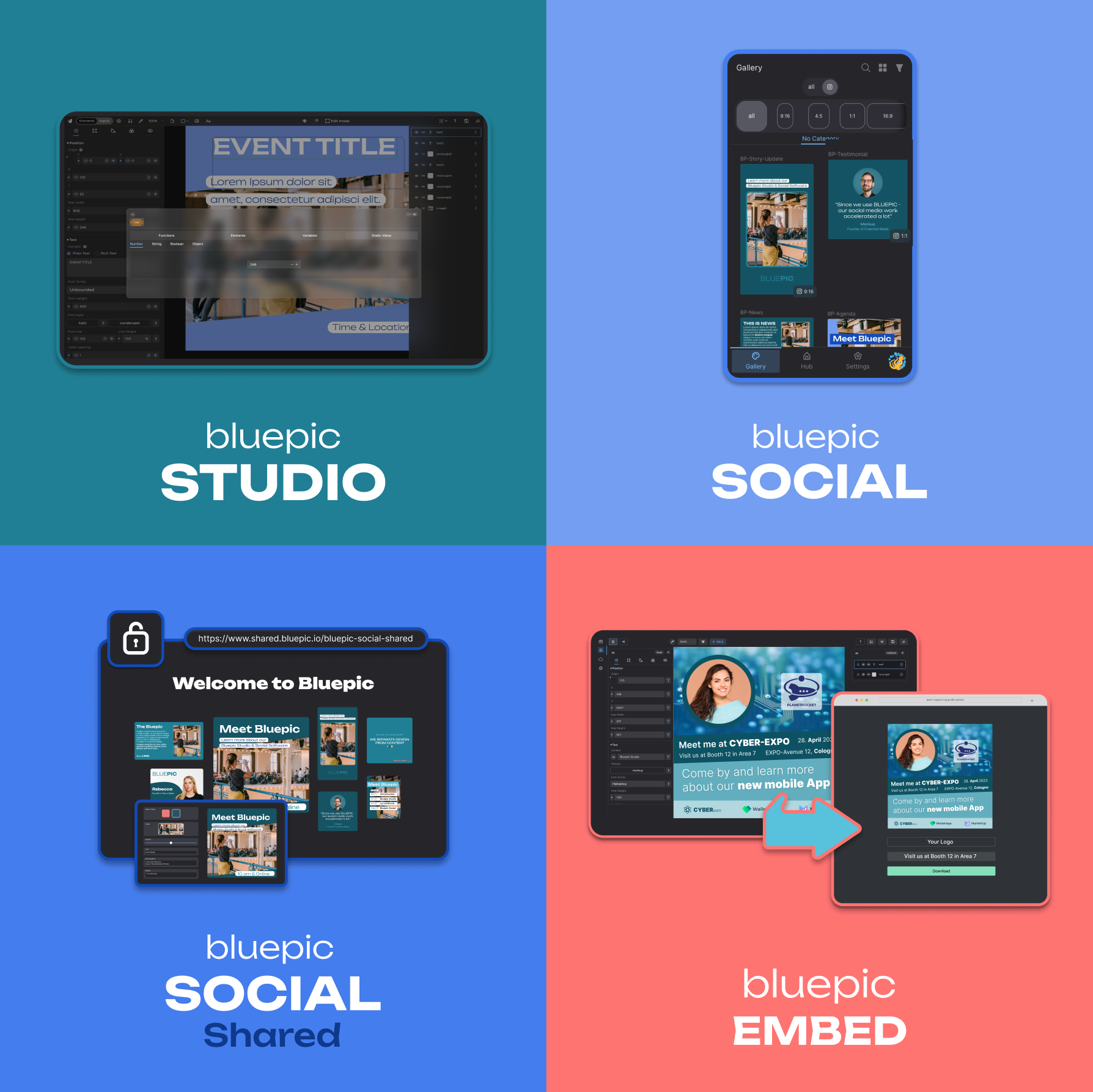
This trifecta ensures a streamlined design process that upholds the integrity of an organization's brand across multiple platforms.
Target Market Insights: Serving Decentralized Content Creators
The primary demographic for BLUEPIC is organizations grappling with the challenge of decentralized content creation while maintaining a cohesive brand identity. This is particularly prevalent in franchise-based business models where the brand's image is crucial. In these scenarios, local store managers or team members, often lacking in-depth design training, are tasked with generating content that aligns with the overarching brand identity. BLUEPIC's solution addresses this unique challenge by providing user-friendly, brand-consistent templates. These tools empower individuals at various skill levels to contribute to the brand's digital presence, ensuring uniformity and quality in public-facing content.
Distinctive Product Features: Emphasizing Reactivity and Restrictiveness
BLUEPIC's software suite stands out for two key reasons:
First, its templates in BLUEPIC Studio are 'reactive' and 'restrictive'. 'Reactive' means they adapt dynamically to different types of content input, ensuring a seamless and visually consistent output regardless of the variation in the content. The 'restrictive'-ness is a crucial feature for maintaining brand guidelines. Templates limit the extent to which end-users can alter core design elements, thus preserving the brand's visual integrity. This dual approach of reactivity and restrictiveness provides an optimal balance between creative flexibility and brand consistency.
Second, the separation of template creation in BLUEPIC Studio and usage in BLUEPIC Social allows for interfaces tailored to both experienced designers and beginners. BLUEPIC Social is distinctive in its ability to let users create brand-consistent graphic content without the complexity of traditional design tools.
Identifying and Filling a Market Gap
The inception of BLUEPIC can be traced back to a project we undertook for an NGO, which became a watershed moment in our journey. During this collaboration, we developed a prototype to aid their social media campaign, a task that revealed a significant yet overlooked need in the graphic design industry. Our experience with the NGO brought us face-to-face with a pivotal realization: there exists a real need for restrictive graphic design tools.
In organizational contexts, we learned that creative freedom, while valuable, is not always optimal. This insight was crucial—no one had fully explored the concept of combining creative flexibility with strict adherence to brand guidelines. The success and popularity of our prototype within the NGO highlighted this unmet market need. It underscored the fact that in certain scenarios, such as with non-professional designers in organizations, guiding creativity within defined boundaries is more effective than offering limitless creative freedom.

This revelation was a turning point for us. We recognized that we had stumbled upon a unique opportunity, one that had not been fully realized in the industry. Driven by this insight, we felt compelled to rise to the challenge. It was this determination to explore uncharted territory that led to the birth of BLUEPIC—a solution born out of practical necessity, yet fueled by the desire to innovate in a space where restrictive creativity could thrive.
Overcoming Challenges with Strategic Focus: BLUEPIC's Foundational Philosophy
Right from the start, our journey at BLUEPIC was marked by an intense dedication to building the best product possible. It’s a startup-tale as old as startup-time. Reflecting on it, I believe it wasn’t a mistake at all. You can't simply market your way out of an inadequate product when your business is centered around providing a highly specific niche B2B solution. It was only after we developed our minimum viable (and loveable) product that the true nature of the graphic design industry began to crystallize for us.
This was a pivotal moment, where we developed our theory of the industry. Competing with the big players or sub-category leaders wasn't our game. Instead, our strategy was to fully embrace our niche, to go all in. It sounds straightforward, but it carried significant implications, a kind of sacrifice many founders might be hesitant to make. It meant choosing the aspects of our product we loved most and letting go of the rest. It's a tough process, akin to picking a favorite child - unnatural and challenging.
Yes, our tool had potential in graphic automation. Yes, it could add value in the print industry. Indeed, there were numerous scenarios where a small team or even a single person could benefit immensely from our tool. But to truly market and sell our product effectively, we had to shed these layers. Marketing and sales require simplicity and clarity, and addressing every possible use-case complicates the narrative. Telling a compelling story means focusing on the core and leaving out the peripheral details.
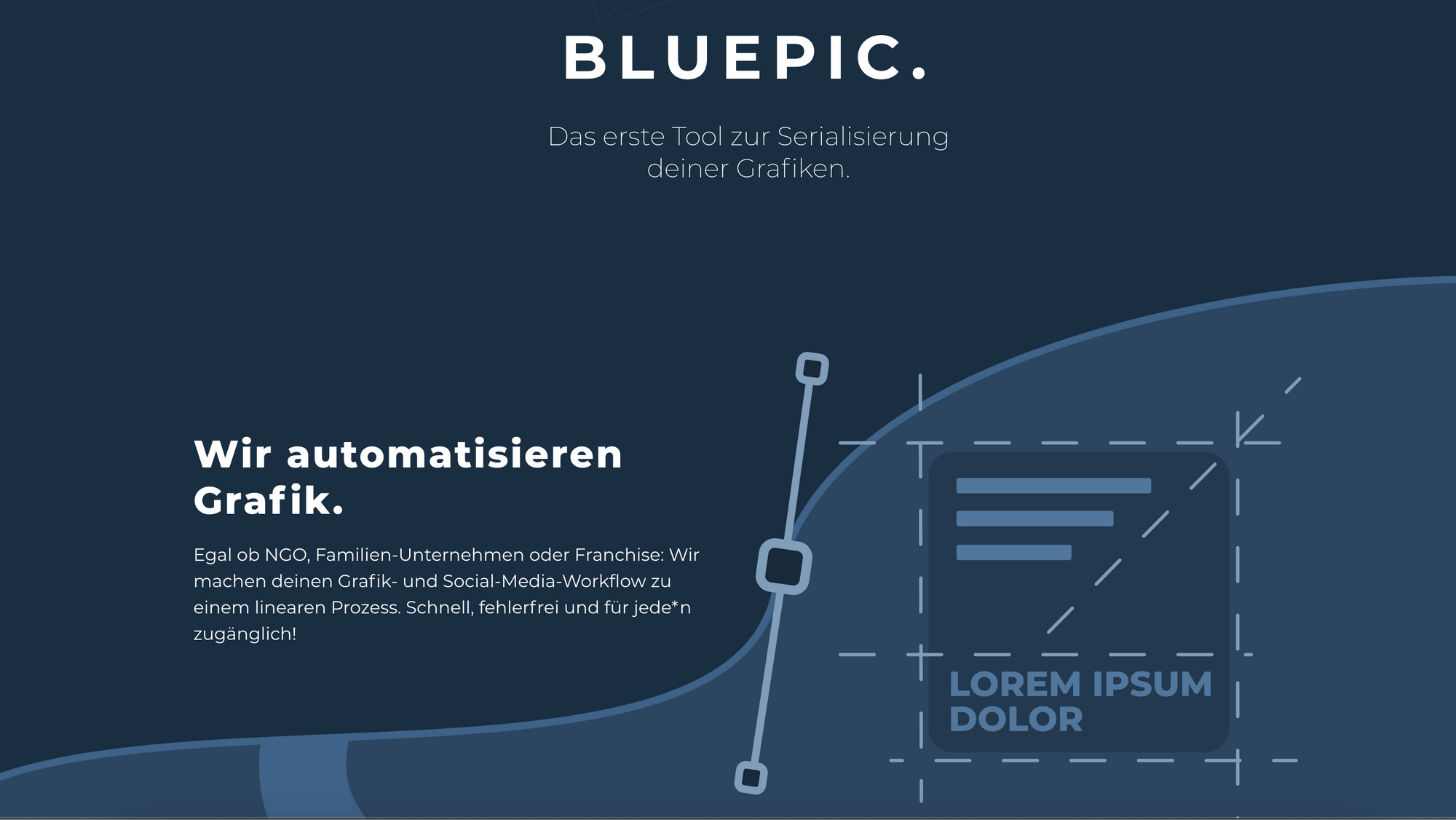
This concept of focus became our mantra. Initially, our attempts were still too broad - the first website draft, the subsequent five, even the current one, perhaps. Our marketing efforts mirrored this broadness. But with each iteration, our message became sharper, more focused. We began to see the results we hoped for: it took less time to convey our vision, our unique selling proposition became clearer, and our target market began to understand and appreciate the value Bluepic offered. This process of continual refinement and learning to embrace our 'niche-ness' has been a critical aspect of our journey at Bluepic.
Future Outlook: Embracing the Niche with Confidence and Focus
We are very excited to embark on this journey into the niche of template-software-for-organizations. We are confident in our belief that we offer the best product and value proposition in the market for this specific challenge. Our primary mission now is to showcase this fact to every potential customer, to demonstrate unequivocally why Bluepic stands as the superior choice.

Looking ahead, as BLUEPIC grows and establishes itself firmly within this sector, there may come a time to revisit and possibly reintegrate the edge cases we set aside in our initial pursuit of focused excellence. However, this expansive approach is more suited to an established enterprise than a burgeoning startup. Just like a skilled chess player, we understand the importance of not planning too far ahead, but rather focusing on steadily improving our position. This strategy isn't about rushing toward an endgame; it's about making thoughtful, strategic moves that enhance our standing with each turn.
Our current mantra is to embrace the moment and maintain a laser-sharp focus. It's this concentration on our core strengths and immediate goals that will ultimately lead us to a place of success and stability. Time will tell!


